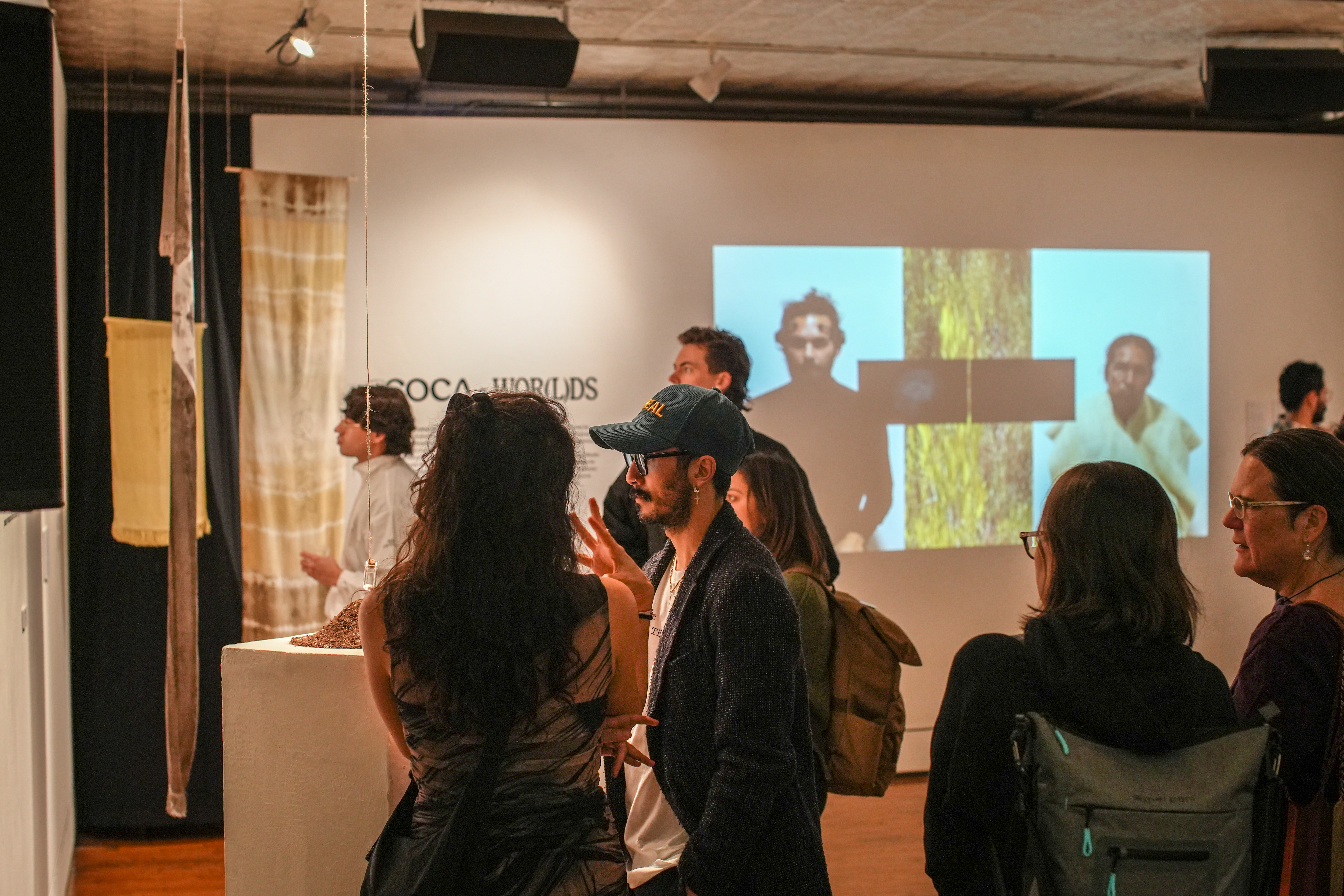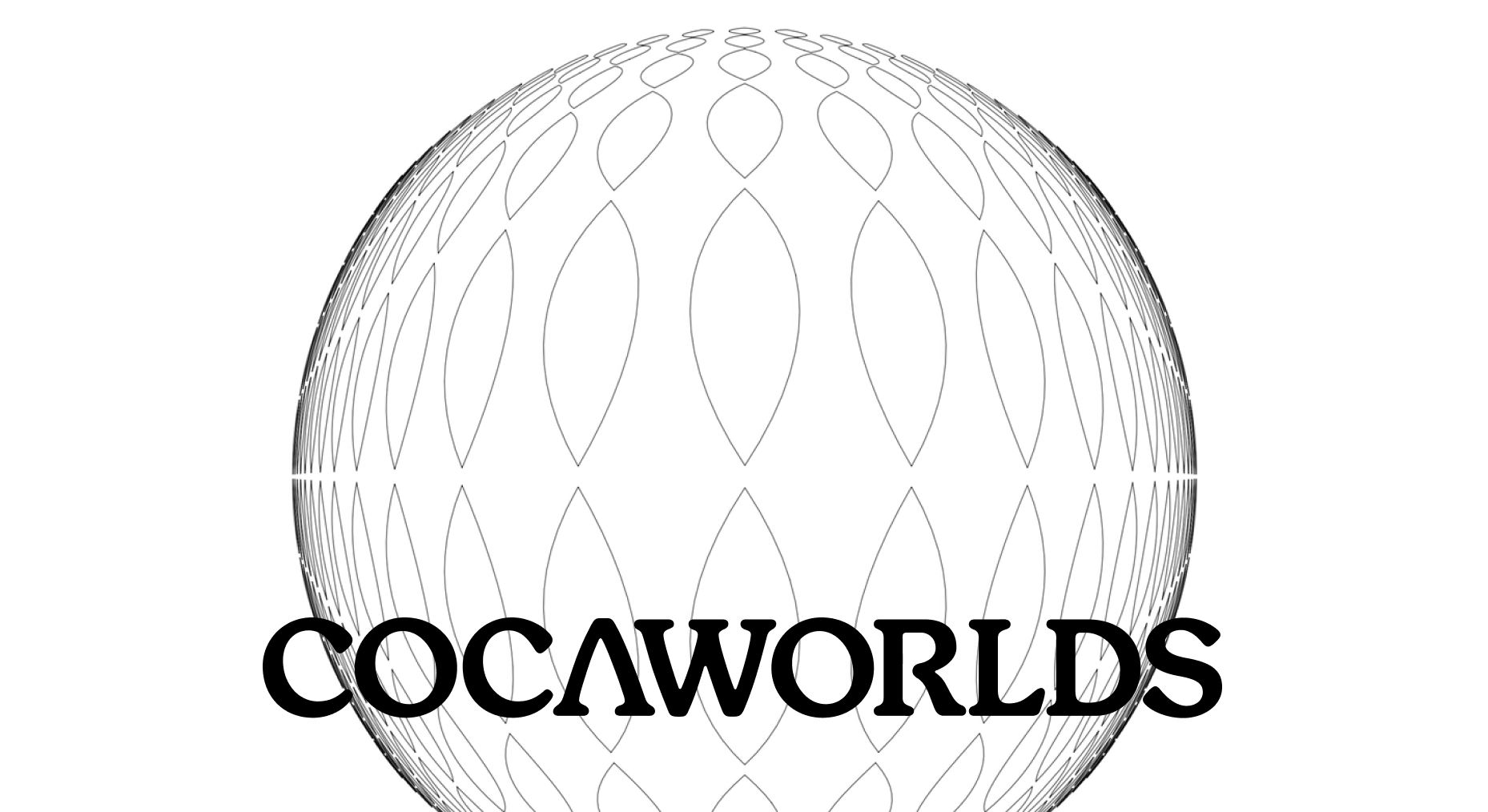

COCAWORLDS at Taller Boricua, Harlem NYC, March - May 2024. /Photos: Beto Paredes ︎︎︎
This curatorial research project seeks to highlight the coca plant's mystical, political, medicinal, and nutritional value through contemporary art.
COCAWORLDS
Curators: Liana, a curatorial research collective formed by Colombian artists and researchers Angélica Cuevas (Medellín, 1988), Juan Pablo Caicedo Torres (Bogotá, 1991) and Giselly Mejía (Támesis, 1990).
Artists: Tatiana Arocha, Pajarita Caucana (Daniela Rubio, Maria Alejandra Torres and Mónica Suárez), Aimema Uai, Sandra Díaz, Andrés Domínguez, Estefanía García Pineda, Miguel Ángel Rojas, Edinson Quiñones, Anyi Ballesteros (Agroarte), NOMASMETAFORAS (Julián Dupont and Clara Melniczuk) with Consejo de Mayores del Territorio Ancestral Kweth Kina & Consejo de Mayores UAIIN-CRIC, Ximena Garrido-Lecca, and Ricardo Cortés.
The project has been carried out with the contribution of researchers from the Colombia Studies Group in New York: Andrés Ávila, Natalia Mahecha, Melody Feo Sverko, Benjamín Garrido, Juan José Guzmán, María Fernanda Pulido, the designer Sebastián Páez, photographer Alejandro Jaramillo, and the Murui elder Emilio Fiagama Jainuama.
My role: Curator, researcher, educator, strategic communicator, and producer.
Language: Spanish and English.
![]()
Curators: Liana, a curatorial research collective formed by Colombian artists and researchers Angélica Cuevas (Medellín, 1988), Juan Pablo Caicedo Torres (Bogotá, 1991) and Giselly Mejía (Támesis, 1990).
Artists: Tatiana Arocha, Pajarita Caucana (Daniela Rubio, Maria Alejandra Torres and Mónica Suárez), Aimema Uai, Sandra Díaz, Andrés Domínguez, Estefanía García Pineda, Miguel Ángel Rojas, Edinson Quiñones, Anyi Ballesteros (Agroarte), NOMASMETAFORAS (Julián Dupont and Clara Melniczuk) with Consejo de Mayores del Territorio Ancestral Kweth Kina & Consejo de Mayores UAIIN-CRIC, Ximena Garrido-Lecca, and Ricardo Cortés.
The project has been carried out with the contribution of researchers from the Colombia Studies Group in New York: Andrés Ávila, Natalia Mahecha, Melody Feo Sverko, Benjamín Garrido, Juan José Guzmán, María Fernanda Pulido, the designer Sebastián Páez, photographer Alejandro Jaramillo, and the Murui elder Emilio Fiagama Jainuama.
My role: Curator, researcher, educator, strategic communicator, and producer.
Language: Spanish and English.

In 2023, we funded Liana Collective and developed COCAWORLDS to reshape narratives and envision possible futures for coca from New York.
The project brings together over 14 transdisciplinary artists, Indigenous authorities, and scholars who reframe coca as a plant of power, medicine, and food in the face of the extractive and punitive violence that has severely wounded its spirit, degraded its territory, and disrupted the lives of Indigenous and peasant communities in Latin America.
COCAWORLDS aims to expand and highlight the complexity of a plant that has been reduced to mere raw material for narcotic production through three central themes: Coca - The Plant, Coca Politics, and Coca Wor(l)ds.
Coca - The Plant examines the plant’s qualities and agency as a living entity, delving into its physical, chemical, and sensory attributes. The use of coca as food and medicine, along with its role as a creative tool, are key concerns of this section. Coca Politics scrutinizes and challenges the tensions arising from the exploitation of the coca leaf for cocaine production and the labeling of the plant as an 'enemy' in the context of the War on Drugs. Finally, Coca Wor(l)ds explores the cultural and spiritual facets associated with the coca plant, emphasizing the Indigenous knowledge systems and worldviews connected to its harvesting and everyday uses.
COCAWORLDS reveals a diverse array of geopolitical tensions, Indigenous healing practices, origin stories, prophetic abilities, cultural artifacts, and mystical connections between coca, language, nature, and divinity, all aimed at transforming narratives and speculating on the future of this sacred plant.
The project brings together over 14 transdisciplinary artists, Indigenous authorities, and scholars who reframe coca as a plant of power, medicine, and food in the face of the extractive and punitive violence that has severely wounded its spirit, degraded its territory, and disrupted the lives of Indigenous and peasant communities in Latin America.
COCAWORLDS aims to expand and highlight the complexity of a plant that has been reduced to mere raw material for narcotic production through three central themes: Coca - The Plant, Coca Politics, and Coca Wor(l)ds.
Coca - The Plant examines the plant’s qualities and agency as a living entity, delving into its physical, chemical, and sensory attributes. The use of coca as food and medicine, along with its role as a creative tool, are key concerns of this section. Coca Politics scrutinizes and challenges the tensions arising from the exploitation of the coca leaf for cocaine production and the labeling of the plant as an 'enemy' in the context of the War on Drugs. Finally, Coca Wor(l)ds explores the cultural and spiritual facets associated with the coca plant, emphasizing the Indigenous knowledge systems and worldviews connected to its harvesting and everyday uses.
COCAWORLDS reveals a diverse array of geopolitical tensions, Indigenous healing practices, origin stories, prophetic abilities, cultural artifacts, and mystical connections between coca, language, nature, and divinity, all aimed at transforming narratives and speculating on the future of this sacred plant.



March 1, 2024, in our inaugural exhibition in New York, Liana presented COCAWORLDS at Taller Boricua in Harlem and featured Colombian artists Edinson Quiñones (Popayán, 1982), Anyi Ballesteros (El Tambo, 1998) and the NOMASMETAFORAS collective formed by Julian Dupont (Popayán, 1985) and Clara Melniczuk (La Ciotat, 1991). Through photography, video, objects, and textiles, the artists propose three perspectives for healing historical and collective wounds surrounding the stigmatization of the coca plant.